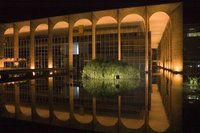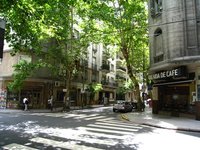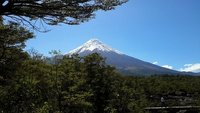South America
Travel Guide South America
Introduction
South America is an irresistible destination for many travellers. With amazing natural beauty to explore from stunning mountains, pristine beaches and wild rain forests. Then there are amazing precolonial ruins to rival any found around the world from cultures still strong today. Spanish and Portuguese colonial buildings and churches dominate major cities with more gold in them then any other churches in the world, where African, Latin and indigenous cultures have fused. Modern art has exploded in many cities next to thumping dance clubs filled with beautiful people. Add in thundering waterfalls surrounded by vast jungles, massive street parties around Carnival time, and lost then found Inca cities. South America can take a lifetime to truly explore and experience.
Geography
The geography of South America is extremely diverse stretching north of the equator to almost touching northern Antarctica. Along the Pacific coast there is the stunningly high mountain range of the Andes, which is also the longest mountain range in the world. This mountain range runs for over 7,000 kilometres and its highest mountain is Aconcagua reaching a stunning 6,962 metres above sea level and one of the most famous mountains on the continent. There are also hundreds of volcanoes in the Andes, many of them being extremely active. Large parts of the Andes are also giving place to relatively flatter areas called Altiplano. Here you'll find salt lakes, adapted wildlife and even some settlements.
The north central area of South America is largely filled with the amazing Amazon Rainforest, which is the largest rainforest in the world and is home to amazing biodiversity. The most southern part of the continent is generally called Patagonia, comprising the southern section of the Andes mountains to the southwest towards the Pacific Ocean and from the east of the cordillera to the valleys it follows south through Colorado River towards Carmen de Patagones in the Atlantic Ocean. To the west, it includes Tierra del Fuego. Argentine Patagonia is for the most part a region of steppelike plains. South America is also home to the Angels Falls in Venezuela, which are the highest waterfalls in the world, the Amazon River, which is the largest river by volume of water and the Atacama Desert, which is the second driest place on earth (after the Dry Valleys on Antarctica) and the highest navigable lake in the world Lake Titicaca on the border of Peru and Bolivia. Anyone looking for high mountains, amazing beaches or steaming jungles can find their perfect place in South America.
Subregions
| Atlantic Coast | Argentina, Brazil and Uruguay |
| Andean | Chile, Bolivia, Ecuador, Paraguay and Peru |
| Northern | Colombia, French Guiana (Overseas Department of France), Guyana, Suriname and Venezuela |
| Islands | Easter Island (Special Territory of Chile) and the Falkland Islands (British Overseas Territory) |
Countries and Territories
| Argentina | Buenos Aires |
| Bolivia | La Paz (administrative), Sucre (constitutional/official) |
| Brazil | Brasilia |
| Chile | Santiago |
| Colombia | Bogota |
| Easter Island (Special Territory of Chile) | Hanga Roa |
| Ecuador | Quito |
| Falkland Islands (British Overseas Territory) | Stanley |
| French Guiana (Overseas Department of France) | Cayenne |
| Guyana | Georgetown |
| Paraguay | Asuncion |
| Peru | Lima |
| Suriname | Paramaribo |
| Uruguay | Montevideo |
| Venezuela | Caracas |
Sights and Activities
Major Cities
- Bogota, Colombia
- Buenos Aires, Argentina
- Caracas, Venezuela
- Guayaquil, Ecuador
- La Paz, Bolivia
- Lima, Peru
- Montevideo, Uruguay
- Quito, Ecuador
- Rio de Janeiro, Brazil
- Sao Paulo, Brazil
- Santiago, Chile
Landmarks
See also: Famous Landmarks
- The Amazon Rainforest and river make up one of the largest rainforest watershed regions in the world.
- The Andes Mountains are stunning mountains that reach dizzying heights up to almost 7,000 metres above sea level.
- The Galapagos Islands are one of the most famous wildlife preserves in the world and home to some very strange animals. Follow the foot steps of history when you visit this untouched wilderness.
- The Iguazu Falls are one of the most famous waterfalls in the world.
- Machu Picchu is one of the most famous ruins in the world.
- Patagonia is an amazing region in the south of of South America with great plains, mountains, glaciers and untouched wilderness. Just remember to be bring your rain gear and sweater for those chilly evenings.
- The Pantanal is one of the most famous wildlife preserves in the world.
- The Salar de Uyuni is the world's largest salt flat at well over 10,000 square kilometres.
- Angel Falls in Venezuela are the world's highest waterfalls at nearly 1,000 metres.
- Chapada Diamantina National Park in Brazil is an amazing region with great plains, mountains, waterfalls and untouched wild nature.
Getting There
South America has good connections to both North America and Central America, as well as quite a few direct flights from Europe, especially from Spain and Portugal and some other main cities. The Caribbean Islands have some good connections as well. Ferries to South America hardly exist, the best options are getting a ride on a boat between Panama and Colombia (overland route from Central America), or the irregular ferry between Venezuela and Trinidad and Tobago.
Best Time to Visit
Its vast size and altitude contrasts means there is no single best time to visit South America. June, for example, offers cool, dry weather in Galapagos, steamy 30 °C in the Amazon – but snow and ice will shut down much of southern Patagonia – which is best visited from November to February. Steep contour shifts can mean balmy temperatures on Chile's coast but snowy and cold weather just 100 kilometres away up into the Andes mountains. September to November offers a good balance in many places, with generally comfortable spring temperatures and dry weather. But check specific locations – even within the same country – to help you set nature's thermostat to suit yourself during trips.
Learning South American Languages
These language phrasebooks were created by Travellerspoint members to help travellers pick up some basic phrases, grammar and pronunciation skills before their trip:
Find out about contributing to or starting a new phrasebook on our project page: Project:Language phrasebooks.
Learning Spanish
If you want to combine your travels with some study, consider taking a Spanish language class. More general information is found in Learning Spanish in South America.
Contributors
 Utrecht (63%)
Utrecht (63%)
from https://utrecht.travellerspoint.com Hien (16%)
Hien (16%)
as well as dr.pepper (8%), Lavafalls (5%), hasbeen (2%), bentivogli (2%), Herr Bert (1%), i c e (1%), kidintown (1%)
South America Travel Helpers

Degolasse
Ask Degolasse a question about South AmericaJust returned from two months in Peru and Bolvia so if you have any questions let me know.

acconte
Ask acconte a question about South AmericaI've been travelling in some countries in these regions and I live in Brazil (and know a little bit of it)!

jackiekslp
Ask jackiekslp a question about South AmericaAnswer questions about S America, SE Asia and anywhere else I have been

Wendylek
Ask Wendylek a question about South AmericaI have lived in La Paz for almost a year and I travelled to Bolivia, Peru, Chili, Ecuador, brazil, argentina. So, if you have questions, ask me! Maybe I can help you out!

KoalaGirl
Ask KoalaGirl a question about South AmericaHave now complete 2 backpacking trips (toally about 6 months) all over South America and absolutely LOVE the place. I can only really provide advice based on my own travels and experience, but always happy to try and help!
This is version 76. Last edited at 8:46 on Aug 7, 18 by Borisborough. 145 articles link to this page.

Except where otherwise noted, content of this article is licensed under a Creative Commons Attribution-ShareAlike 3.0 License




